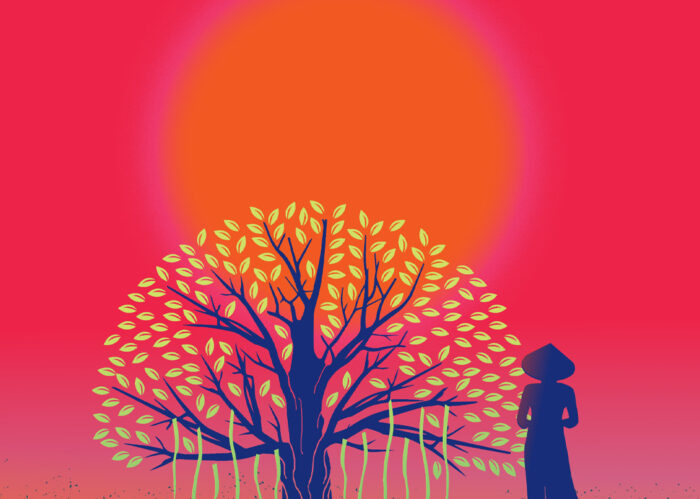#PaperbackThursday: The Sound of a Wild Snail Eating
This week for Paperback Thursday: The Sound of a Wild Snail Eating by Elisabeth Tova Bailey. In a work that beautifully demonstrates the rewards of closely observing nature, Bailey shares an inspiring and intimate story of her encounter with a Neohelix albolabris—a common woodland snail. It’s a remarkable journey of survival and resilience, showing us how a small part of the natural world can illuminate our own human existence, while providing an appreciation of what it means to be fully alive.
Read our Q&A with snail aficionado, Elisabeth Tova Bailey:
Q. The Sound of a Wild Snail Eating is part memoir, part natural history and it details your relationship with a snail over the period of a year. What led you to write this book?
A. I wrote down some of my snail observations and a friend was so intrigued that she suggested I turn them into an essay. The essay seemed to really delight readers. After some years had passed, I wondered if there could be a book, but I wasn’t sure there was more to write. I began to read scientific gastropod literature, fell in love with it, and found there was quite a bit more to say. I wrote the book partly because I felt I owed the snail a biographical thank you and partly because I felt the story would be of help to other people going through a rough time.
Q. The setting for your book is the geographically and emotionally isolated space of your bedroom. How did you survive that situation?
A. The isolation and limits of illness can be very tough, sometimes even tougher than illness itself. I do not know how I, or anyone, survives such situations. The snail was very critical in getting me through a hard time. I think each of us, in surviving any difficult life challenge, have to find a way to stay connected to the world as that connection is what sustains us.
Q. At what point did watching the snail transition from the boredom of being bedridden to genuine interest?
A. When I first started to watch the snail, simply because it was there and moving around, I did not expect it to do anything of interest at all. It was when I became aware that the snail had habits, just like me, that I became intrigued. Like me, it woke up and went to bed. Like me it wanted something delicious for dinner. It turned out to have interesting small-sized adventures, as did I. That we were cohabitating and living our life patterns in parallel created a sense of kinship and sparked my curiosity.
Q. Your descriptions of the snail’s life are so detailed and interesting that the snail becomes an actual character in the book, a key presence in your life. Did you know when you started writing the book that the snail would become a main character?
A. I knew that I would write as much as possible about the snail as I never wanted to write about myself. However, when two friends read an early draft, I was surprised by their reactions as one wanted more description of the snail and the other wanted more information about me. It was only then that I realized that I had two main characters. This seemed like a problem and it worried me for awhile, but as the book developed, I started to realize that I was sort of “channeling” the snail. While I was the initial main character it is through my experience that the reader experiences the same connection to the snail that I did, and in this way the snail’s character becomes the larger and more central presence in the book.
Q. Most people wouldn’t think that a snail could be very interesting. Yet you became fascinated by the life of your tiny companion. What are some of the surprising things you learned about your snail?
A. Every creature on earth, when examined closely, leads a fascinating and full life. In some respects the lives of the smaller and short-lived creatures are even more intense, more crammed with plot, than our longer human lives. There are so many interesting snail traits that it’s hard to choose which to mention. I was in awe of my snail’s strength as well as its ability to exist in space at any angle, even upside down. My snail could go dormant whenever circumstances were not in its favor, which is an incredibly useful trait. Snails are also famous for spending many hours in courtship.
Q. How did your relationship with the snail help you survive a difficult year?
A. My snail was at my side 24/7 and just to have that kind of contact with another life was critical as I was so cut off from my usual life. While I couldn’t do the things I wanted to do, I could, by watching the snail, enter into its microcosmic world, and so in that way, I was still able to participate in life. It was also helpful to see an example of a small creature adapt and persevere outside of its usual environment, as living with chronic illness involves adapting to changed circumstances and persevering.
Q. Your book is about your isolation due to illness and how your situation parallels the hermit-like life of a snail, yet it highlights a remarkable interspecies relationship between a snail and a human. How did you write simultaneously about such opposites – isolation and connection?
A. Illness can limit one from participating in normal activities and even from socializing. So I wrote about that isolation and what it was like to observe my healthy visitors as they came and went. In contrast, the snail was constantly at my side, and so a very crucial interspecies bond developed. It was the diminished connection to my own world, due to illness, that allowed my increased connection to the snail’s world—a world that was more on a par with my reduced functioning level. I tend to think anyone in my situation would also have bonded with a snail.
Q. Why would a book about an interspecies relationship with a snail be of interest to the average reader?
A. Ultimately, I think the book speaks to the universal experience of being alive. All humans understand isolation on some level, even within a family, a marriage or partnership, or a friendship; one can sometimes still feel isolated. Likewise, everyone has had the flu and knows what it is like to be laid low, at least temporarily. While the benefits of an interspecies relationship with common pets is well known, people are always intrigued to read about a relationship with a creature they don’t know well.
-
Overall Score
Reader Rating: 0 Votes




One comment